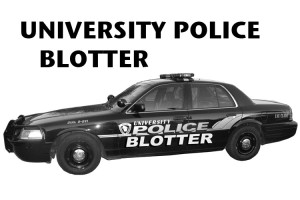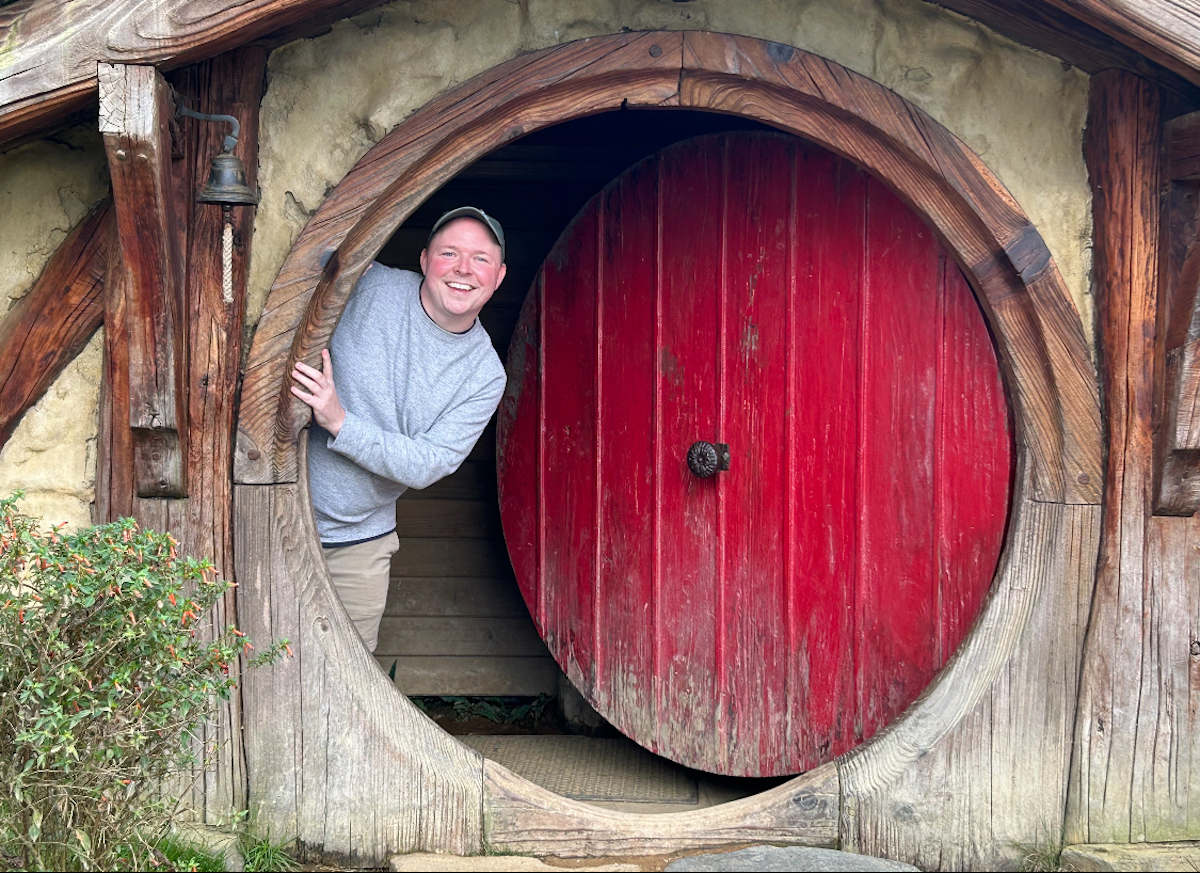On Wednesday, Sept. 25, UW-Eau Claire’s Multicultural Student Services hosted an event entitled “Blugold Dialogue: Care and Counterprotest.”
The intention behind the seminar was to educate students, staff and community members on free speech and self-care strategies in preparation for the upcoming election. Roughly a dozen people gathered in Centennial Hall to engage in discussion and hear from experts on these topics.
History professor Selika Ducksworth-Lawton and counselor Stefanie Benesh were the primary speakers.
Ducksworth-Lawton began by outlining the basics of engaging in peaceful protest and garnering input from the audience about their experiences with free speech.
The professor used interactive software to gauge some of the fears attendees have in regards to protesting on the UW-Eau Claire campus and in the community.
The first question asked whether audience members fear any backlash from on-campus protesting. The responses were in the affirmative, listing fears about backlash from entities like the administration, other students, community members and counter-protesters.
“I think it’s less fear, but more just making sure students have the context on why people might be protesting different views. It’s more about that background on why people can come and protest on campus,” said Kallie Friede, director of the Gender and Sexuality Resource Center.
Ducksworth-Lawton went on to ask whether there are things audience members are afraid to say in campus public spaces. Again, attendees answered ‘yes’ unanimously. One clarified there are certain things they feel unsafe saying while alone, but not with fellow protesters.
“The fact you’re saying ‘yes’ indicates that I have some things to address,” Ducksworth-Lawton said.
When asked whether there are things people are afraid to say publicly off campus, results were mixed. Many responses still conveyed cautiousness, while others said it depends on the atmosphere and familiarity with a certain place or group.
Ducksworth-Lawton asked how the group would define the phrase “legal protest.” Answers included “keeping people safe,” “attention to rules,” “heckler’s veto,” “No damage to property,” “rules and safety” and “staying peaceful.”
“I want to talk about how to plan a certain protest and what to know in advance,” Ducksworth-Lawton said.
The professor went over some key points to be aware of and what to avoid.
“In the context of the law, freedom of expression has some limits,” Ducksworth-Lawton said.
The professor said to avoid offensively inciting violence, committing slander, and engaging in “obnoxious speech.”
“When we’re talking about protest, the two big ones are inciting and specifically trying to provoke violence and threats,” Ducksworth-Lawton said.
The professor also stressed the importance of recording video footage of protests, adding that in many past protests, that kind of evidence helped acquit a lot of convicted protesters.
“Having video evidence helps you maintain control of the narrative later on, when counter-protesters might try to skew the picture,” Ducksworth-Lawton said.
Shifting the focus to violent protests, Ducksworth-Lawton said historically, peaceful protests pack a bigger punch.
“When we look at the modern Civil Rights Movement, the most effective tactic has been nonviolent protest,” Ducksworth-Lawton said. “Polls have shown that Americans do not like violent protest and cannot see the issue as clearly when violence has ensued.”
The professor acknowledged, however, that violence can sometimes be difficult to avoid.
“Nonviolent protest is hard … even though it’s nonviolent, it can still be provocative,” Ducksworth-Lawton said, citing an example of wearing a Black Lives Matter t-shirt while walking past a confederate flag.
“Everyone deserves room to exist, even if people see it as provocative. There is room for self-defense, but not offensive violence,” Ducksworth-Lawson said. “Your restraint highlights the awfulness of the others’ message.”
Benesh went over some general self-care and self-soothing techniques to deal with everyday stress and tensions surrounding conflict. She emphasized the use of breathing exercises to calm the mind enough to think before reacting.
“We know how to do this already, but when we’re really elevated it’s hard to remember,” Benesh said. “Self care is about what works for you.”
Benesh emphasized finding a “window of tolerance” for staying calm and grounded. She said breathwork techniques, prioritizing sleep, and the utilization of mental health apps can all be useful.
In political activism settings, she said, mental health and sensory accommodations are growing in popularity. For example, Benesh pointed out, recent protests have had “quiet areas.”
Several groups work to provide inclusivity for neurodiverse people who want to be involved while avoiding a stressful situation.
Ducksworth-Lawton agreed that balancing the mind is essential when planning a protest.
“If you engage in a protest, there’s also a lot of work involved,” Ducksworth-Lawton said.
One crucial element, according to Ducksworth-Lawton, is the use of a pre-planning checklist.
“The shortest amount of time I’ve ever spent planning a protest was five days,” Ducksworth-Lawton said. “It’s so important to be prepared and stay organized every step of the way.”
Methods to diffuse violence during protests include putting space between protesters and counterprotesters, use of authority figures or religious leaders to assist in diffusion and a certain knowledge of law and ordinances in place.
Ducksworth-Lawton added that engagement with the city and law enforcement officers can be a useful tool. She discussed some guidelines for behavior on and off campus, as stated on the school website.
The knowledge of these guidelines, she said, has proven very useful when pulling off effective protests.
“We did not have one ticket at all in our marches on campus,” Ducksworth-Lawton said.
They emphasized that when it comes to freedom of expression in classes, rules and judgements sometimes depend on circumstance.
“When the first amendment comes into the classroom … that’s time, place and manner,” Ducksworth-Lawton said.
She touched briefly on the subject of street preaching and street speech occurring on campus.
“A lot of that speech can be totally and absolutely obnoxious,” Ducksworth-Lawton said. “Because this is a public university, we cannot remove them from campus unless they are disrupting classes, causing physical threats or inciting riots. You can’t really shut down speech because you don’t like it.”
Ducksworth-Lawton pointed out that the UW System Board of Regents has its own on-campus policies. Likewise, the City of Eau Claire has its own ordinances.
“Campus rules are not always the same as community rules … in some cases, the campus is more lenient,” Ducksworth-Lawton said.
In closing the lecture, Benesh introduced the group to a ‘grounding exercise,’ which is an additional self-care technique. The floor was then opened for discussion.
Some students in attendance asked whether the outbreak of violence is always a bad thing during a protest, citing historical examples of violent yet effective activism.
“Armed self defense can be really effective,” Ducksworth-Lawton said. “However, if things get violent, there is a need for lots of lawyers, fire discipline and practice. For a lot of reasons, I don’t recommend that people engage in violence outside of self defense.”
McIntyre Library arts librarian Anna Zook asked whether there are consequences for law enforcement officers who make false arrests during protests.
Ducksworth-Lawton said the U.S. Supreme Court often gives qualified immunity for such instances, as wrongful arrest is a civil liability and not a legal one. However, protesters who have been wrongly arrested have the option to sue in a class action legal suit.
Following the presentation, attendees had some brief discourse about freedom of expression on campus and peaceful activism before adjourning for the evening.
Wojahn can be reached at wojahnal7429@uwec.edu.








